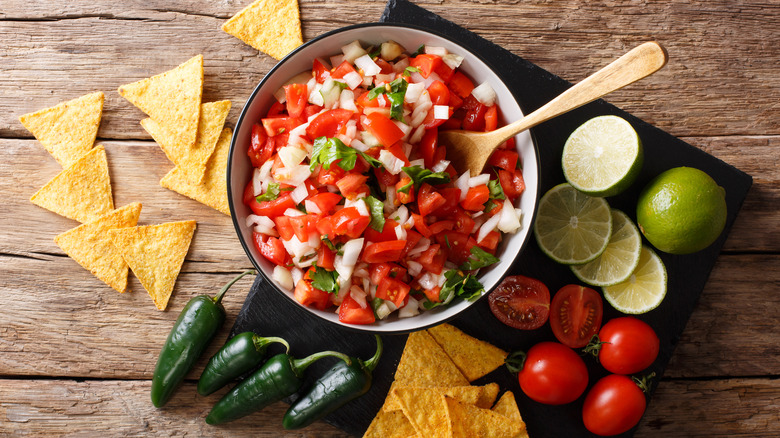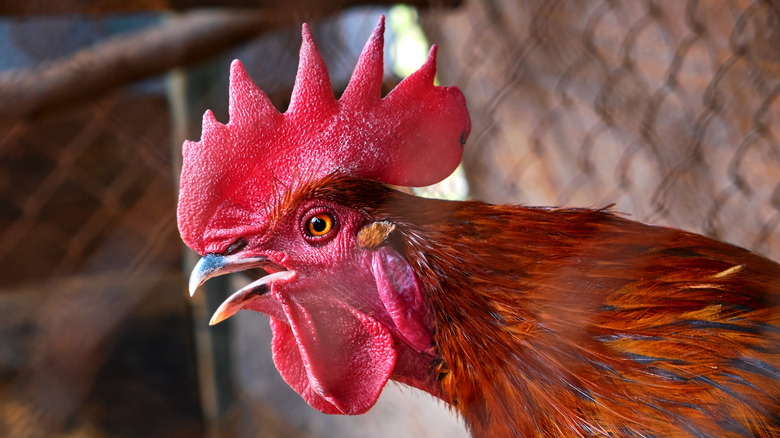How Pico De Gallo May Have Gotten Its Name
If you're looking to wake up the flavors of a bland dish, pico de gallo is the condiment for the job. Fresh pico de gallo is a lively combination of onion, jalapeño, cilantro, lime juice, tomato, and salt, designed to add color, texture, flavor, and heat to Mexican-inspired dishes, though pico de gallo can work with flavors from around the globe. While some folks may use "pico de gallo" and "salsa" interchangeably, they're different. Pico is chunkier and always composed of fresh ingredients, while salsas can include crushed or blended ingredients, some of which may be cooked, roasted or smoked.
Twisted Taco tells us that pico de gallo as a condiment likely dates back to the Aztec civilization that ruled what is now central Mexico back in the 15th and early 16th centuries, according to Brittanica. The Aztecs spoke a language called Nahuatl, but that isn't where we got the name "pico de gallo." Where did the name come from?
Pico de gallo has a fowl meaning
Both Twisted Taco and Epicurious agree that the Spanish term "pico de gallo," which translates as "rooster's beak," has its roots in how the condiment used to be eaten. The bright, fresh combination of peppers, onions, and tomatoes used to be picked up by the index finger and thumb, making the hand into the shape of a pecking rooster's beak. Though pico de gallo certainly doesn't contain any chicken, it would absolutely be delicious on a chicken taco!
If you're looking to broaden your pico de gallo horizons, you can experiment with a whole range of flavors. We love the idea of fresh pineapple, which would be heavenly on fish tacos. And pico de gallo isn't limited to tacos. It can complement a wide range of dishes, like this tender, Argentine-inspired grilled pork tenderloin. Pico de gallo adds crunch, color, and acidity to the plate, whether your meal's inspiration is from Mexico or anywhere else in the world.

